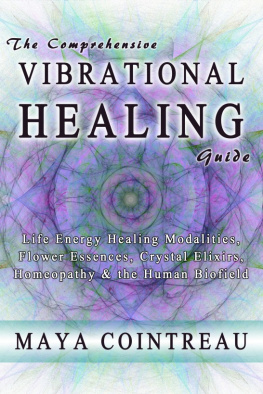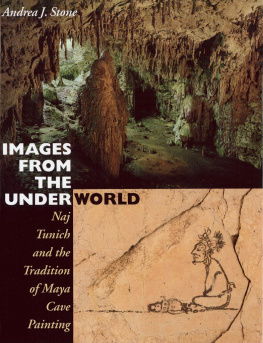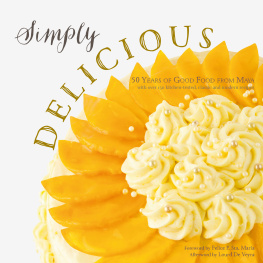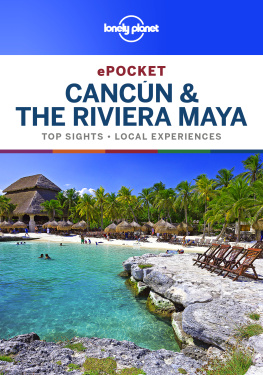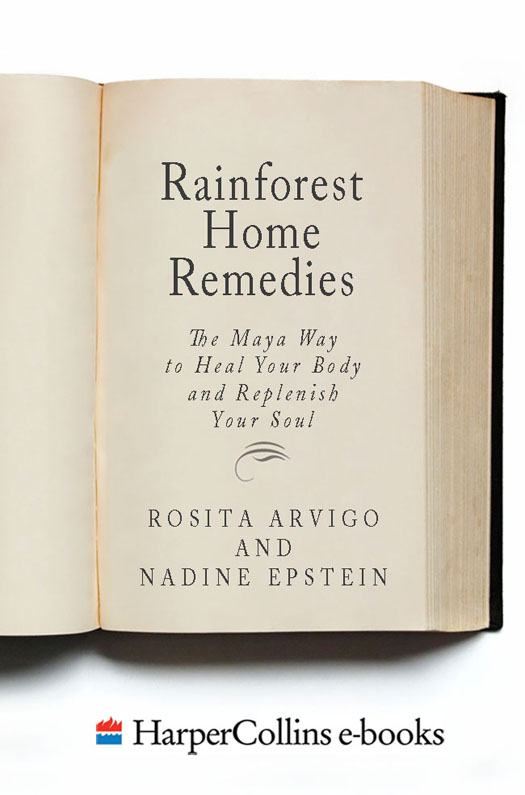Contents
Index
F ar too many people think of the Maya as a people from the past, perhaps because of all the attention focused on the fascinating cities that their ancestors left behind. I too am thrilled at the sight of the ancient temples, palaces, and mounds scattered throughout Belize and Central America. Ix Chel Farm, my home, is built on top of one.
Having lived among the Maya for thirty years, I can assure you that they are very much alive! Many of their twenty-eight languages are still spoken today throughout parts of Mexico, Guatemala, Belize, Honduras, and El Salvador. In addition to their languages, some of their ancient traditions remain intact. Maya medicine is one of the richest traditions to have survived the destruction wrought by the Spaniards.
Maya architectural, astronomical, mathematical, and engineering feats have fascinated us for generations, but few people are aware of their sophisticated and effective medical system. When I first began working with Don Elijio in 1982, I was mainly interested in absorbing his knowledge of plants and herbal remedies so that I could incorporate it into my own healing practice. Although I had lived alongside the Maya and the Nahuatl Indians in southern Mexico for years, I knew next to nothing about their large body of medicinal knowledge.
Only gradually did it dawn on me that Don Elijio and the Maya had much more to offer than just plant knowledge. Indeed, their knowledge and use of plants is only one, albeit very important, part of their worldview.
Anthropologists consider Maya medicine a medical-religious system. In essence the Maya have a two-pronged approach to healing. They have remedies for a wide range of physical ailments that any individual or health practitioner would be pleased to add to a healing repertoire. As part of the visible world, physical ailmentslike stomachaches or infected woundsare handled with natural-empirical or naturalistic knowledge.
The Maya have equally effective remedies, however, for the ailments of the spirit that the human eye cannot see, such as sadness, grief, fright, and envy. They are part of the magical-mystical world, and have traditionally been the responsibility of the hmen. Maya healers believe that these ailments involving the soul and spirits are supernatural in origin, and that supernatural forces can both sicken and heal.
The natural and supernatural bodies of knowledge are intertwined. For example, Maya plant lore does not exist in a state of separation from the human soul. This concept is sometimes difficult for the modern mind, trained in separatist ideology from infancy, to grasp. The union of these two worlds allows Maya medicine to go beyond modern medicine.
I am especially taken with Maya spirits, the concept of spiritual illness, and spiritual healing. I love the way the Maya spirits are an intimate part of daily liferespected in so many activities, not just during a weekly appointment in a church or synagogue. Maya spiritual healing can help fill the emptiness and longing at the root of so much illness.
Over the years I have begun to find the magical side of Maya medicine extremely usefulfor both my patients and myself. The Maya paradigm has opened doors that I never imagined existed. Their ideas about spiritual illness have helped me understand why some people get well and some dont, even when their illnesses and treatments are the same.
There is plenty of room for this kind of wisdom in our modern culture. Since the 1960s Westerners have been storming the gates of Eastern healing traditions, and that intense interest has not subsided. We suggest that it would be wise to look south and add Maya wisdom to our banks of planetary knowledge.
Traditional healing is a tapestry that has been woven by humans throughout history. The patterns reverberate from culture to culture, and the themes are universal. Much of what you will read here about the Maya will resonate with what you know intuitively. Although the Maya contribution to the tapestry has been neglected, the colors and patterns remain, reflecting world wisdom for those who choose to see.
Every once in a great while the folly of one century becomes the common sense of the next. The time of the Maya has arrived. Time, you might say, has caught up with them. Or perhaps it is just that the rest of us have finally caught on.
There is a legend that the old godlike prophet-king of the Maya and Aztecs will return one day. He is known as Quetzalcoatl to the Aztecs and Kukulcan to the Maya. Both of these names refer to the plumed serpent or feathered snake. The snake has been a symbol of medicine and healing power since ancient times for many cultures around the world, including the Maya.
This great god-king prophesied that white men would come to these lands on the wings of a dove, and that men would lead them with two different feet. One foot would be that of a dove and the other that of an eagle. The white people would claim to be doves but would act like eagles. They would eventually steal the red mans land, religion, women, and dignity, and the ensuing period of slavery and suffering would last for hundreds of years.
Then one day other white men would appear with both feet like those of the doves, proclaiming love and brotherhood. These are the ones who would join the red man in an era of renewal, respect, and reverence for the nearly lost ancient ways. Gradually, says the prophecy, the red man will regain his former position and join the white men with the feet of doves in building a better world.
Sx Prncples of Maya Medcne
Here are the basic principles of Maya medicine as still practiced throughout Central America today.
1. Chulel, or Life Energy
Like other indigenous cultures from Alaska to Brazil, the Maya recognize and honor the sacred within all forms of life. Plants, trees, stones, animals, and humans are all sacred.
Everything in creation is permeated with what the Maya call chulela vibrant energy force that the Maya believe emanates from a divine spiritual source. The Maya see the entire cosmos as imbued with chulelhouses, mountains, springs, sacred places, the sky, the earth.
The ancient Maya kings were called chul ahaw, lords of the life force. Chul is also one of the Maya words for soul.
Chulel is akin to Qi or chi the energy force described in Chinese medicine, the Indians prahna, the Hunas mana, and the Voodoo mojo. Although missing from modern medicine, the concept of life force is found in healing and spiritual beliefs around the world and has been around as long as humans have been around. Look for it in cabalistic writings and traditions, the works of pre-Socratic Greeks such as Heraclitus, the teachings of the Ojibwa, and pantheism. In contemporary popular culture it is no less than the force in Star Wars. Whatever the culture, chulel is a universal truth that allows us to weave our disparate selves into the fabric of the world.
Sharing Chulel with
Wild Animals
In Yucatec Maya communities a chanul is a supernatural guardian or protector. A chanul shares chulel with a person from birth and usually takes the form of a wild animal. In shamanic terminology a chanul is sometimes called a power animal.
Belief has it that when a person is born, a corresponding chanul is born in the spirit world. This chanul remains corralled there until called forth to assist and protect. Some shamans call upon chanuls for help. Others, like Don Elijios teacher Jeronimo Requena, have the ability to transform themselves into their chanuls. They can transfer their chulel to their chanul.




